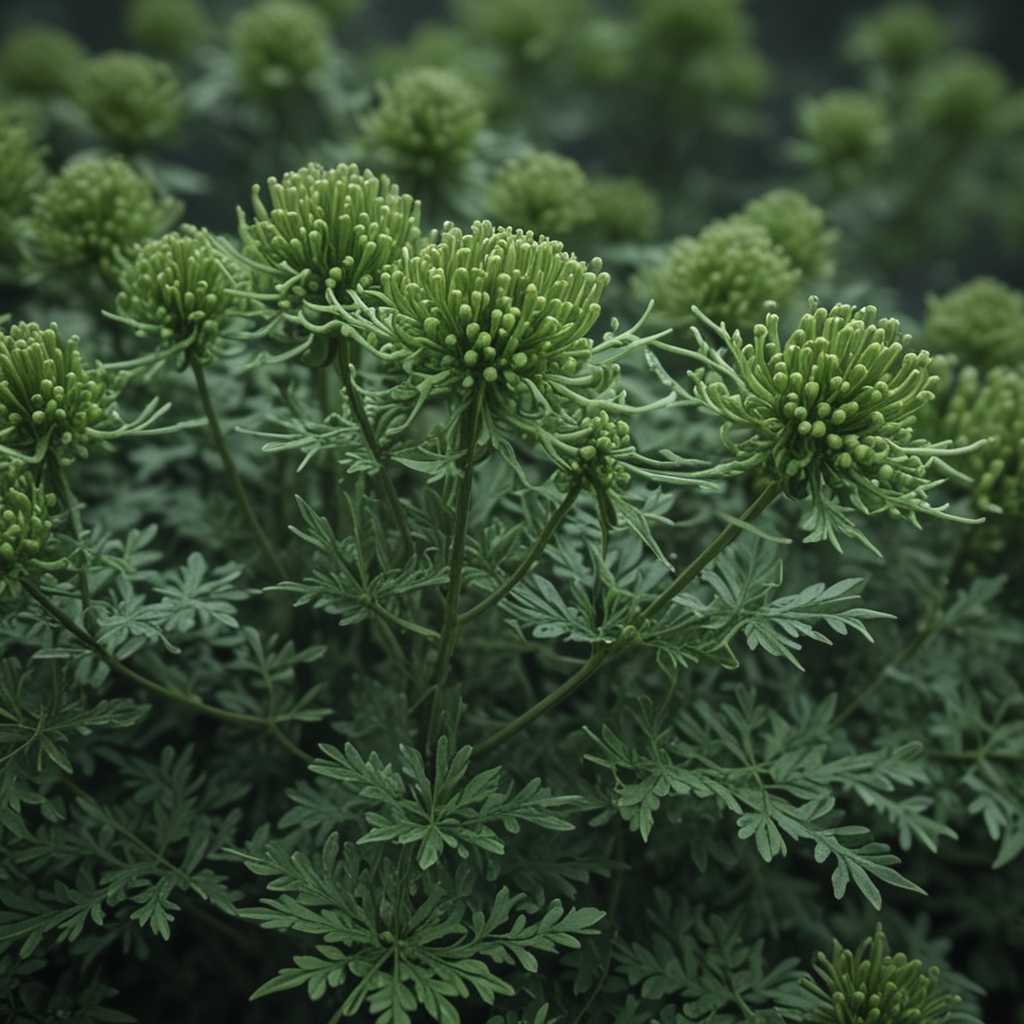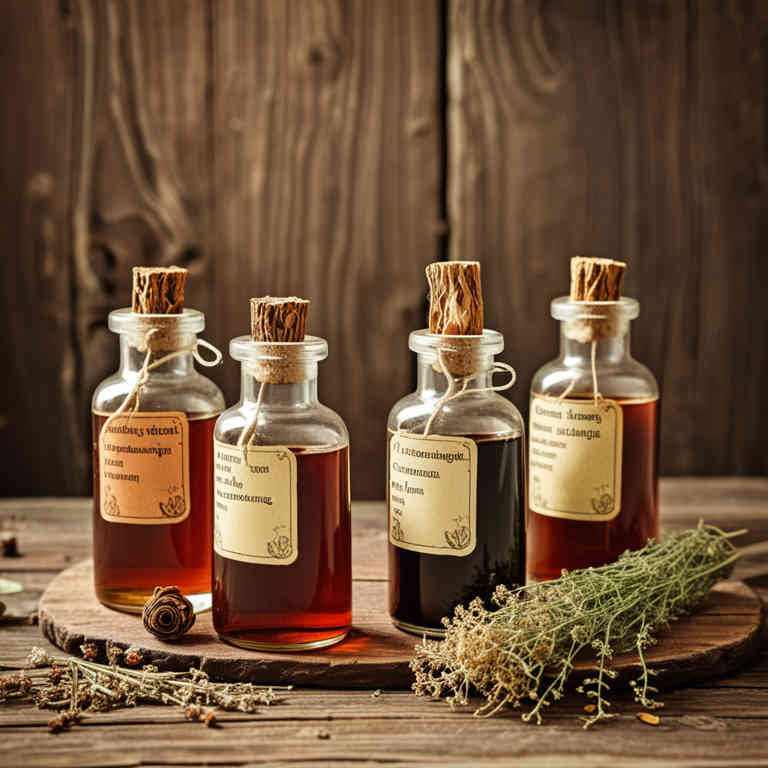10 Best Ligusticum Chuanxiong Preparations

The best medicinal preparations of Ligusticum chuanxiong are decoctions, tinctures, capsules, oils, and teas, each offering unique benefits for traditional Chinese medicine.
Decoctions involve boiling the herb to extract its active compounds, commonly used for digestive and circulatory support.
Tinctures provide a concentrated form, often taken orally for quick absorption.
Capsules offer a convenient and standardized dosage, ideal for modern health routines.
Oils are used topically to alleviate pain and inflammation, while teas provide a soothing way to incorporate the herb into daily wellness practices.
These preparations highlight the versatility and enduring value of Ligusticum chuanxiong in herbal medicine.
Below there's a list of the 10 best herbal preparations of ligusticum chuanxiong for medicinal purposes.
- 1. Decoctions
- 2. Tinctures
- 3. Capsules
- 4. Oils
- 5. Teas
- 6. Oinments
- 7. Liniments
- 8. Creams
- 9. Syrups
- 10. Lozenges
1. Decoctions
Ligusticum chuanxiong decoctions is commonly used to promote blood circulation, relieve pain, and treat conditions such as headaches, migraines, and menstrual disorders.
These decoctions are also used to alleviate symptoms of stroke, improve cognitive function, and reduce inflammation. The most common medicinal uses include treating headaches, particularly those associated with blood stasis, as well as conditions like dysmenorrhea and peripheral neuropathy. The bioactive constituents responsible for its medicinal properties include ligustilide, butylphthalide, and other essential oils that have anti-inflammatory, antispasmodic, and vasodilatory effects.
These compounds contribute to its ability to enhance circulation and reduce pain in various health conditions.

2. Tinctures
Ligusticum chuanxiong tinctures is commonly used to promote circulation, alleviate pain, and support neurological health.
These tinctures are frequently employed in traditional medicine to treat conditions such as headaches, migraines, menstrual cramps, and circulatory disorders. They are also used to address symptoms related to poor blood flow, such as numbness and tingling in the extremities. The bioactive constituents responsible for these effects include ligustilide, butylidenephthalide, and other essential oils that have anti-inflammatory, antispasmodic, and vasodilatory properties.
Additionally, these compounds may contribute to the tincture's ability to enhance cognitive function and reduce stress.

3. Capsules
Ligusticum chuanxiong capsules is commonly used to promote blood circulation, relieve pain, and treat conditions such as headaches, menstrual disorders, and cardiovascular issues.
These capsules are widely utilized in traditional Chinese medicine for their ability to dispel wind-damp, relieve pain, and invigorate blood. The most common medicinal uses include treating migraines, rheumatic pains, and menstrual cramps, as well as supporting cardiovascular health. The bioactive constituents responsible for its medicinal properties include ligustilide, butylidenephthalide, and other essential oils that have anti-inflammatory, analgesic, and vasodilatory effects.
These compounds contribute to its effectiveness in improving circulation and reducing inflammation in the body.

4. Oils
Ligusticum chuanxiong oils is commonly used to promote circulation, alleviate pain, and support neurological health.
This herbal preparation is often employed in traditional medicine to treat conditions such as headaches, migraines, menstrual disorders, and circulatory issues. It is also used to address inflammation and improve cognitive function. The bioactive constituents responsible for its medicinal properties include ligustilide, butylidenephthalide, and other essential oils that possess anti-inflammatory, analgesic, and neuroprotective effects.
These compounds contribute to its ability to enhance blood flow and reduce oxidative stress in the body.

5. Teas
Ligusticum chuanxiong teas is commonly used to promote blood circulation, relieve pain, and alleviate symptoms associated with headaches, migraines, and menstrual disorders.
This herbal preparation is frequently employed in traditional Chinese medicine to treat conditions such as headaches, dizziness, and circulatory issues. It is also used to address emotional imbalances and improve cognitive function. The bioactive constituents responsible for its medicinal properties include essential oils, lignans, and flavonoids, which have anti-inflammatory, antioxidant, and vasodilatory effects.
These compounds contribute to its ability to enhance blood flow and reduce inflammation in the body.

6. Oinments
Ligusticum chuanxiong oinments is commonly used to treat conditions related to blood circulation, headaches, and musculoskeletal pain.
This herbal preparation is widely employed in traditional Chinese medicine for its ability to promote blood flow and alleviate inflammation. It is frequently applied for ailments such as migraines, arthritis, and circulatory disorders. The bioactive constituents responsible for its medicinal properties include ligustilide, butylphthalide, and other essential oils that have anti-inflammatory and analgesic effects.
These compounds contribute to the ointment's ability to reduce pain and improve vascular health.

7. Liniments
Ligusticum chuanxiong liniments is commonly used to relieve pain, reduce inflammation, and improve circulation, particularly in conditions affecting the muscles, joints, and nervous system.
These liniments are often applied topically to treat ailments such as arthritis, muscle strains, sprains, and neuralgia. The bioactive constituents responsible for these effects include ligustilide, butylphthalide, and other essential oils that have anti-inflammatory, analgesic, and circulatory stimulating properties. Additionally, the herb is believed to enhance blood flow and promote the healing of damaged tissues.
Its traditional use in Chinese medicine highlights its role in addressing both acute and chronic pain conditions.

8. Creams
Ligusticum chuanxiong creams is commonly used to alleviate pain and inflammation associated with various musculoskeletal conditions.
These creams are often applied topically to treat ailments such as arthritis, muscle strains, and joint pain. The bioactive constituents of Ligusticum chuanxiong include ligustilide, butylidenephthalide, and other essential oils, which possess anti-inflammatory, analgesic, and circulatory-stimulating properties. These compounds work synergistically to reduce swelling, improve blood flow, and relieve discomfort.
As a result, Ligusticum chuanxiong creams are widely utilized in traditional Chinese medicine for their therapeutic benefits.

9. Syrups
Ligusticum chuanxiong syrups is commonly used to treat conditions related to blood circulation, headaches, and inflammation.
This herbal preparation is often employed in traditional medicine to alleviate symptoms of migraines, menstrual disorders, and cardiovascular issues. It is also used to reduce swelling and promote healing in wounds. The bioactive constituents responsible for its medicinal properties include ligustilide, butylidenephthalide, and other essential oils that have anti-inflammatory, antispasmodic, and circulatory-stimulating effects.
These compounds contribute to its ability to improve blood flow and reduce pain associated with various ailments.

10. Lozenges
Ligusticum chuanxiong lozenges is commonly used to relieve symptoms of respiratory conditions, such as sore throat, cough, and inflammation.
These lozenges are often prescribed for their ability to reduce inflammation and promote healing in the throat and upper respiratory tract. The most common medicinal uses include treating colds, flu, bronchitis, and other inflammatory throat disorders. The bioactive constituents responsible for these effects include essential oils, lignans, and flavonoids, which possess anti-inflammatory, antimicrobial, and analgesic properties.
These compounds work together to soothe irritation and enhance immune response in the respiratory system.
